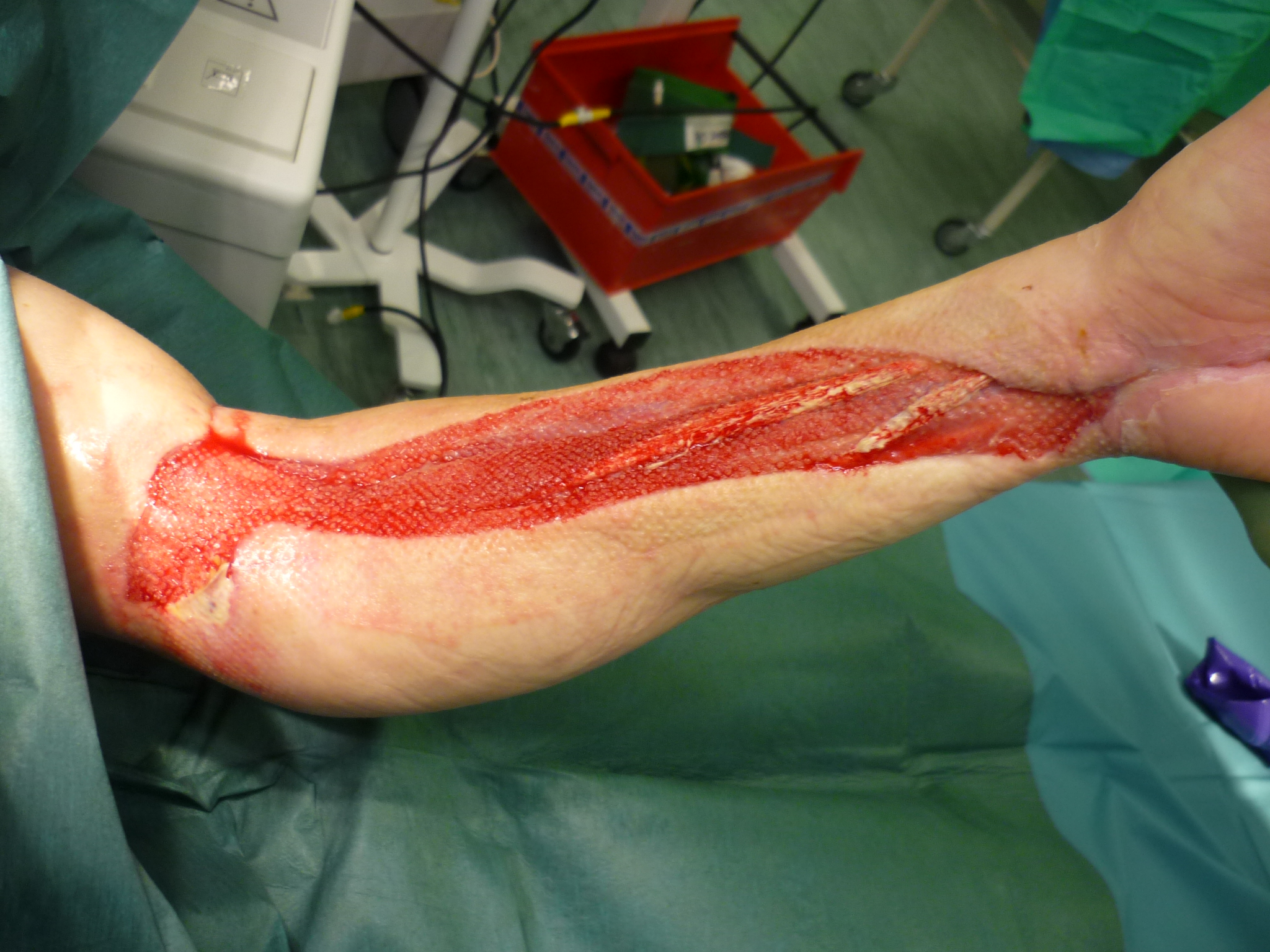Fasciotomy on:
[Wikipedia]
[Google]
[Amazon]
Fasciotomy or fasciectomy is a surgical procedure where the fascia is cut to relieve tension or pressure in order to treat the resulting loss of circulation to an area of tissue or muscle. Fasciotomy is a limb-saving procedure when used to treat acute 
compartment syndrome
Compartment syndrome is a condition in which increased pressure within one of the body's anatomical compartments results in insufficient blood supply to tissue within that space. There are two main types: acute and chronic. Compartments of the ...
. It is also sometimes used to treat chronic compartment stress syndrome. The procedure has a very high rate of success, with the most common problem being accidental damage to a nearby nerve.
Indications
Compartment syndrome
Compartment syndrome is a condition in which increased pressure within one of the body's anatomical compartments results in insufficient blood supply to tissue within that space. There are two main types: acute and chronic. Compartments of the ...
is one of the conditions where a fasciotomy may be indicated. People who are likely to have injuries needing a fasciotomy include the following:
* Crush injuries
* Athletes who have sustained one or more serious impact injuries
* People with severe burns
* People who are severely overweight
* Snakebite
A snakebite is an injury caused by the bite of a snake, especially a venomous snake. A common sign of a bite from a venomous snake is the presence of two puncture wounds from the animal's fangs. Sometimes venom injection from the bite may occu ...
victims, but very rarely
Complications
A delay in performing the procedure can lead to neurovascular complications or lead to the need for amputation of a limb. Complications can also involve the formation of scar tissue after the operation. A thickening of the surgical scars can result in the loss of mobility of the joint involved. This can be addressed through occupational or physical therapy.Process
Fasciotomy in the limbs is usually performed by a surgeon under general or regional anesthesia. An incision is made in the skin, and a small area of fascia is removed where it will best relieve pressure. Plantar fasciotomy is anendoscopic
An endoscopy is a procedure used in medicine to look inside the body. The endoscopy procedure uses an endoscope to examine the interior of a hollow organ or cavity of the body. Unlike many other medical imaging techniques, endoscopes are insert ...
procedure. The physician makes two small incisions on either side of the heel. An endoscope is inserted in one incision to guide the physician. A tiny knife is inserted in the other. A portion of the fascia near the heel is removed. The incisions are then closed.
In addition to scar formation, there is a possibility that the surgeon may need to use a skin graft
Skin grafting, a type of graft surgery, involves the transplantation of skin. The transplanted tissue is called a skin graft.
Surgeons may use skin grafting to treat:
* extensive wounding or trauma
* burns
* areas of extensive skin loss du ...
to close the wound. Sometimes when closing the fascia again in another surgical procedure, the muscle is still too large to close it completely. A small bulge is visible, but is not harmful. It takes a much longer time to heal and in some cases takes several months.
See also
*List of surgeries by type
Many surgical procedure names can be broken into parts to indicate the meaning. For example, in gastrectomy, "ectomy" is a suffix meaning the removal of a part of the body. "Gastro-" means stomach. Thus, ''gastrectomy'' refers to the surgical remo ...
* Ischemia-repurfusion injuries of the appendicular musculoskeletal system
References
{{Muscle/soft tissue procedures Surgical procedures and techniques